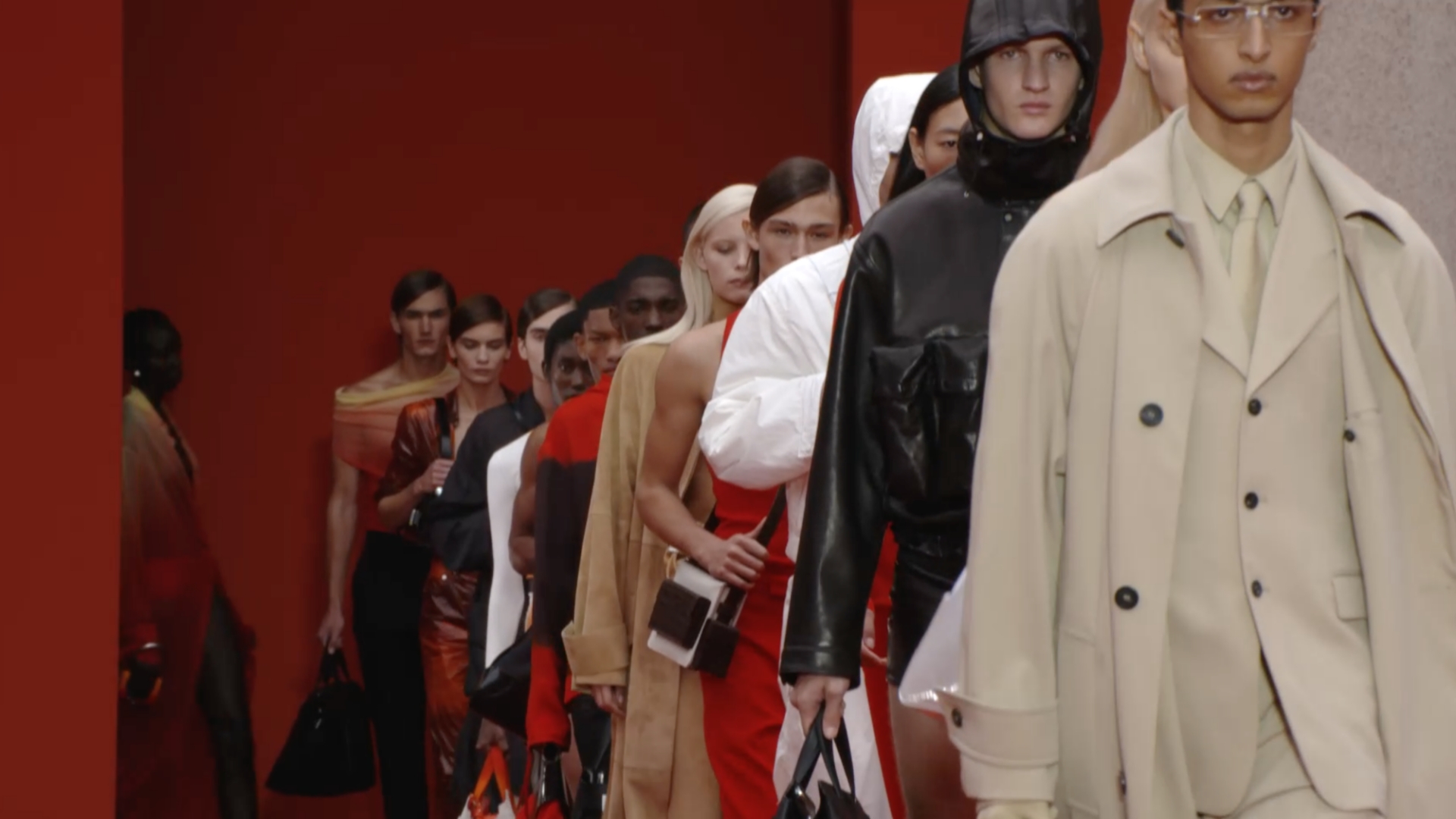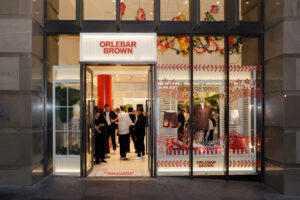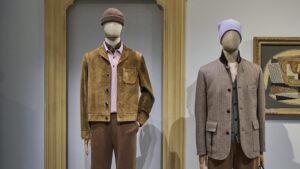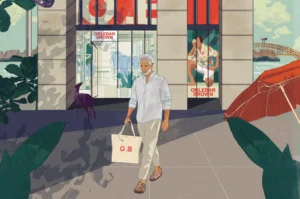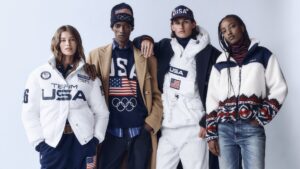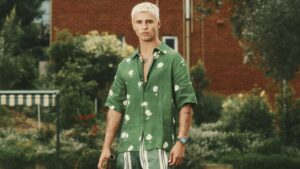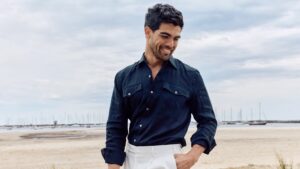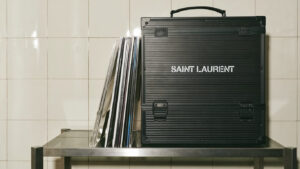As buyers, journalists, and a panoply of jet-setting celebrities say ‘arrivederci’ to the Spring 2023 edition of Milan Fashion Week, we thought now would be an opportune time to revisit some of our favourite moments from leg three of the European shows – and offer a prediction about how what’s been glimpsed on Milan’s runways might well trickle into the closets of fashion risk-takers and aesthetically inclined men.
Taking a macroscopic view: the vibe that pervaded this September’s menswear shows seemed to have been one of excellent excess. Big ‘fits (in senses both literal and euphemistic) were rampant across the board, as was the aura of occasional gravity that has been sorely missing in men’s clothing – for obvious reasons – these last three years.
From American designer Rhuigi Villaseñor’s debut Bally collection to another virtuosic display from Prada maestro Raf Simons, here are the highlights from Milan Fashion Week getting an enthusiastic nod of approval around Boss Hunting HQ.
RELATED: Sydney is Getting An Entire Concept Store For The Adidas x SFTM Collab
The Resurrection of Ferragamo

Cast simultaneously as a debut and rebrand for the house once known as ‘Hollywood’s Shoemaker’, designer Maximilian Davis’s inaugural Ferragamo collection met with near-universal acclaim when it soared across the courtyard of Milan’s former archiepiscopal seminary last weekend.
The 27-year-old black Briton (whose bona fides include working with Riccardo Tisci and Phoebe Philo at Celine) has been widely credited with bringing fresh, playful energy to Ferragamo – all whilst remaining acutely aware of the house’s numerous, often accessory-centric design codes. Dégradé colour treatments and bleeding-effect fabrics reoccurred throughout the collection’s casualwear: top-to-toe bodysuits and slightly translucent technical outerwear, realised in colours that catch the eye without demanding a full-blown head turn.
And then there was the tailoring – lots of it, in fact. Flowing, roomy and sometimes intentionally amputated (as in the case of a statement leather duster), it’s clear that Davis has an abiding love of menswear’s sartorial bedrock. Here, much like the rest of his debut collection, suits and coats in hi-tech wool crepe were confidently reimagined for the Ferragamo man of the 21st century: young, languid and above all, not afraid to make an entrance.
The Mean Streets of Zürich With Bally

Davis’s spring collection for Ferragamo wasn’t the only debut being watched closely. Over at Bally, the Filipino-American designer Rhuigi Villaseñor took his first bow as Creative Director: marking the occasion with a mixture of men’s and women’s ready-to-wear that overlays somnambulant Swiss luxury with a visceral West Coast edge.
Critics have variously remarked that Villaseñor’s spiritual influences are perhaps a little too self-identifying – a mixture of late-2000s Tom Ford, Versace, and Ralph Lauren Purple Label – but it’s a remarkably cogent debut from a designer who, until recently, was most expert at crafting tongue-in-cheek riffs on Americana staples.
Something of the spirit of RHUDE (Villaseñor’s own LA label) lives within this new Bally incarnation. There’s a raffish, decadent quality – in articles like tiger-striped cord trousers or sumptuous wool suits in jewel tones of emerald and sapphire – that, just a few years ago, would have been unthinkable at this bastion of ‘respectable’ Swiss luxury. Now that the door’s been kicked in, it’s exciting to think what other untapped perspectives Villaseñor – and the luxury-savvy acolytes who follow him – might introduce.
Prada’s Paper Boys

Held in a life-sized facsimile of a suburban home (made entirely from recycled paper, by the award-winning Dutch architect Rem Koolhaas) Prada’s Spring 2023 collection is yet further evidence that the brand does its best work whenever it intellectualizes the discourse of fashion. For most designers, over-analysis brings with it a real risk of alienating consumers. At Prada, it’s the noblest of traditions.
On the men’s side, Co-Creative-Director Raf Simons has crafted a wardrobe that sidesteps almost all the overcooked maximalism that appears to be gripping the wider industry. Instead, through repeated interrogation of democratic styles of clothing – think denim, the humble trail sneaker – Simons successfully augments the message etched in Koolhaas’s surroundings.
Streamlined, vaguely boyish pieces in block colours of taupe and beige – a gingham check number being the only notable exception – are the order of the day – manufactured using an optimal amount of fabric and processes that articulate Prada’s perennial interest in sustainability.
RELATED: Kanye West Is Calling It Quits On His $1 Billion YEEZY x Gap Partnership
Boss
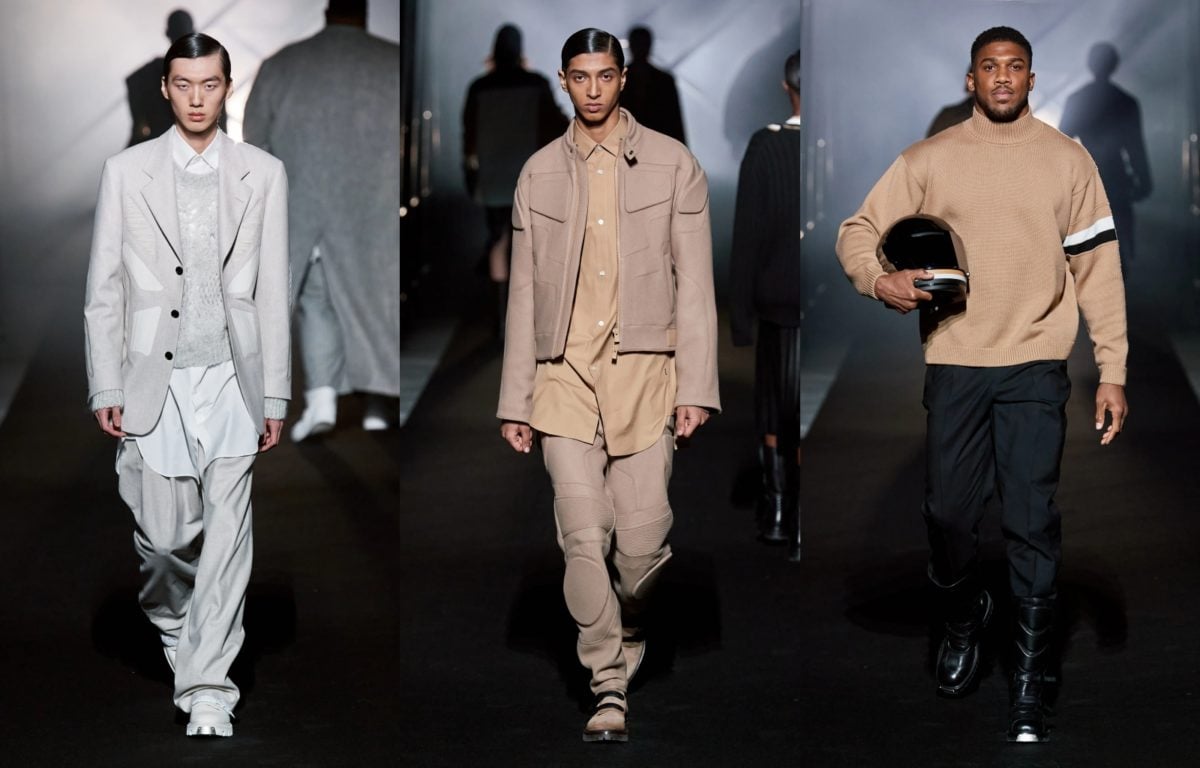
While Boss has spent the past 12 months shoring up its social cachet with an array of digital activations and lifestyle engagements (e.g. the St. Andrew’s Invitational), the brand’s appearance this Milan Fashion Week embodied a conscious return to fashion’s bosom – and an opportunity to deploy some serious star power.
In a show opened by Naomi Campbell that closed with Future walking, a similar duality was at work inside Design Director Marco Falcioni’s collection. Equal parts tailoring motif and moto, there was plenty of voluminous, starkly coloured ‘power suiting’: a stark contrast to the softly constructed, weekend-friendly outerwear that sprang from Falcioni’s desire to explore contemporary ideas about “soft power”. Slated to hit European boutiques in short order, there was much on show that evoked Boss’s heyday in the late 1980s – a portent, perhaps, of how history has a habit of repeating itself.
Ferrari

Not content to dominate the world of motorsport (and now, apparently, of family-friendly pseudo-SUVs) Ferrari returned to Milan Fashion Week this year for its third season as an honest-to-God luxury clothier. The guestlist itself was worthy of diligent scrutiny: with the marque’s CEO, Benedetto Vigna, alongside Exor Group president John Elkann (whose family hold a controlling stake in Ferrari) and textile monarch Gildo Zegna all in attendance.
In the shadow of Italy’s most powerful fashion luminaries, Creative Director Rocco Iannone – an underrated operator, with previous experience at Pal Zileri and Giorgio Armani – fielded an eclectic collection of men’s and women’s apparel “in which everything is mixed and that represents the spirit of our time”. A departure from his previous efforts (which often took literal influence from the designers and engineering corps of the Scuderia) Iannone seemed most concerned this time round with how Ferrari has historically exerted its influence in a lifestyle context.
Frond-print organza shirts drenched in neon nodded obliquely in the direction of Kate Bush and Miami Vice – the show responsible for introducing a generation of Americans to the Testarossa – while pit crew-inspired tees, emblazoned with the liveries of Ferrari’s racing partners, evidenced fashion culture’s continuing appetite for logomania. A mixed bag of influences to be sure, but one that consumers (many of whom recognise Ferrari’s clout beyond the paddock) can’t help but be curious about.
